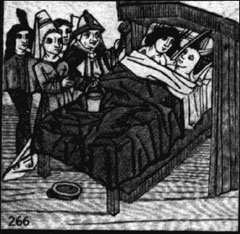As Wednesday, August the 1st, is the horses celebrated birthday here in Australia, I thought I’d honour them by discussing their input into history.
"History was written on the back of the horse," an inscription at The Horse Park in Kentucky, USA. How very true.
 |
| The Nobleman, groom and steed. |
These days horses do not appear in modern day novels as much as they once did, simply because ownership of horses has turned from an essential form of transport, to an ownership of pleasure.
Like today, horses were not a ‘cheap’ commodity to own or maintain. Horses ranged in price, depending on their use. Where they part of a matching team for a stately carriage, a well breed hack for a gentlemen or lady, or perhaps a horse with superior speed offering the gentlemen a potential taste of victory on the track. I read somewhere (of which I can’t recall, much to my frustration) that William Cavendish, the 6th Duke of Devonshire, paid a thousand pounds (about $100,000 today) for a race horse which had to be shot two weeks later as it broke it leg in its first race. Bummer...
In the Regency, one could not own a carriage or keep the horses to draw it if you didn’t earn at least 1,100 pounds a year. This equates to about $110,000 in today’s markets. Don’t forget it is not simply just the initial cost of buying the steed that will set you back, which could range from one to several hundred pounds for a midrange animal, but you had to maintain the horses and keep grooms and drivers. A horse kept in stable in London cost a lot more to feed than a horse at a country estate. It wasn’t like the London horses had access to pasture to graze and therefore cost more to feed in grain.
 |
| A post-chaise carriage |
**Please forgive me if I’ve offered a seemingly large section on how much it all cost, it just blows my mind! Allrighty, different track – jockeys ready?
 |
| Tattersall's 1865 |
Well, back in the Regency, Tattersall’s was a horse sale yards in London, established in 1766 by Richard Tattersall, horse master to the Duke of Kingston. These sale yards become a popular place to buy and sell horseflesh, carriages and even hounds, with sale days being twice a week in winter and one a week in summer. It housed stabling for over a hundred horses with plenty of room to inspect carriages or the yapping hounds in their kennels (think of the noise!).
While there was always the opportunity to visit the sale yards, most of the gentry took an avid interest in breeding their own horseflesh, some actually became well known for it.
Horses were also fashion statements. Who had the best horse or the most stunning steed?
"I say, did you see the stallion Lord Percy rode upon in Lester Square yestereve? The beast was simply the most stunning horse I have ever laid eyes upon!"
 In 1711, Queen Anne established regular race meetings at her park at Ascot (heard of it anyone?) while several gentlemen also arranged private ‘match races’ between themselves, the stakes often quite high.
In 1711, Queen Anne established regular race meetings at her park at Ascot (heard of it anyone?) while several gentlemen also arranged private ‘match races’ between themselves, the stakes often quite high.
But we woman cannot be forgotten. Flat and steeple racing was also held for women. Mrs. Bateman wrote in 1723, "Last week, Mrs. Aslibie arranged a flat race for women, and nine of that sex, mounted astride and dressed in short pants, jackets and jockey caps participated. They were striking to see, and there was a great crowd to watch them. The race was a very lively one; but I hold it indecent entertainment." Some women--such as the infamous Letty Lade, who reportedly swore like a coachman, rode and drove to please themselves, and made their own fashion statement by bucking the trends for demure ladies. (I think I would have liked these woman...)
But horse racing was a increasingly expensive sport (yes, at the costs again). Prince Regent’s stud farm for his horses was rumoured to have an annual cost of 30,000 pounds a year for its upkeep. That’s 3 million a year today! Sheesh!
How many of you out there dreamed of owning your own horse, riding it off into the sunset and feeling the wind fly through your hair?
 |
| My boy, Rain Ridge |
Once a horse became old, no longer able to keep up with the other horses in the team or simply because it became injured, the quickest answer was a bullet. This was not always the case and sometimes if the horse was deemed favourably by its owner or horse master, it would be sent out to a farm to work for its remaining days. But sadly, a true retirement, of lazy days roaming a lush paddock, wasn’t a rarity. Good to see some things have changed.
Happy Birthday Horses! Have a carrot on me.
In my debut novel, THE ROSE’S BLOOM (that coincidently hits
the shelves today) my hero and heroine relied a great deal on their trusty
steeds, whether it be to take them on a hunt, journey or simply a pleasure ride.
My hero was actually out on a hunt when he noticed a young woman by the riverbank,
her unexperienced fingers seeming to get her nowhere. He was a gentleman after
all, and who is he to allow this poor damsel to go unaided? *giggle*
THE ROSE'S BLOOM is the first instalment in my ROGUES OF DECEPTION series with Total-E-Bound Publishing.
Comment below to go in the running for a change to win your
very own copy! Just remember to leave your email address so I can contact you
if you’re the lucky winner!
Quote reference: Website, Rakehell, Regency Horses



















